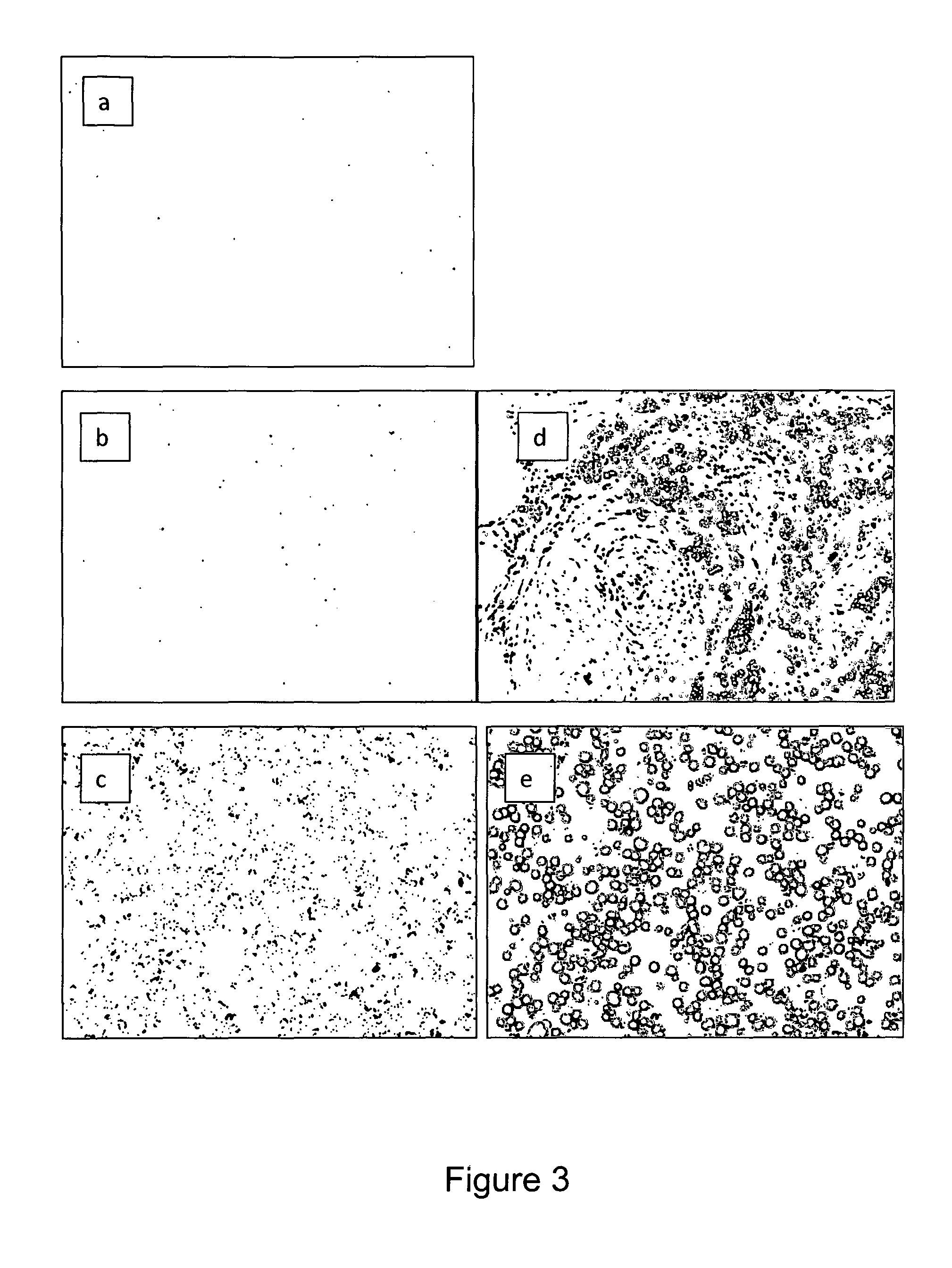Quantification of single target molecules in histological samples
a single target and histological sample technology, applied in the field of immunostained histological sample quantification and visualization of immobilized targets, can solve the problems of increasing the detection limit, limiting the usability of ihc enzymatic systems for target visualization, and undetectable amount of deposited dy
- Summary
- Abstract
- Description
- Claims
- Application Information
AI Technical Summary
Benefits of technology
Problems solved by technology
Method used
Image
Examples
example 1
Quantification of a Target in a Histological Sample (Method I)
Theoretic Considerations: Determination of Kd1, Kd2 and Pr (Method I)
[0398]In order to define a number of single entities of a target in a sample and, in particularly, total number of said units, e.g. single target protein molecules, several complex equilibrium experiments may be performed, employing:[0399]1. Several Reference samples of a test material with identical, but unknown, levels of an immobilized protein molecules, Pr. (e.g. serial sections of a single block of homogeneous Her2 reference cells lines);[0400]2. A primary antibody, Ab1 (e.g. a high affinity monoclonal Rabbit-anti-HER2) with unknown dissociation constant, Kd1 that binds to said protein,[0401]3. An Enzyme labeled secondary antibody, Ab2 with unknown dissociation constant, Kd2, that binds to said primary antibody.[0402]4. Technologies for visualizing almost every single molecule of said secondary antibodies as discrete visually distinguishable dots (t...
example 2
Quantification of a Target in a Histological Sample (Method II)
[0607]1. Theoretical Considerations
[0608]The method (II) for estimation of the total (absolute) number of target molecules in cells has a number of similar approaches compared to the method (I), however it has also some differences.
[0609]One of the problems associated with the previously described method is that equilibrium conditions should be established for both primary antibody and labeled secondary antibody. In case of high target concentrations this can be a problem as depletion of binding agents during incubations will occur and it will thus require multiple and prolonged incubations with the binding agents. The present method utilizes that using very high concentration of binding agents a “top” level of binding (which means that essentially all binding sites in the sample will be saturated with the corresponding binding agent) can be established without having the depletion problems. Evidently never 100%, but 90-...
PUM
| Property | Measurement | Unit |
|---|---|---|
| diameter | aaaaa | aaaaa |
| pH | aaaaa | aaaaa |
| pH | aaaaa | aaaaa |
Abstract
Description
Claims
Application Information
 Login to View More
Login to View More - R&D
- Intellectual Property
- Life Sciences
- Materials
- Tech Scout
- Unparalleled Data Quality
- Higher Quality Content
- 60% Fewer Hallucinations
Browse by: Latest US Patents, China's latest patents, Technical Efficacy Thesaurus, Application Domain, Technology Topic, Popular Technical Reports.
© 2025 PatSnap. All rights reserved.Legal|Privacy policy|Modern Slavery Act Transparency Statement|Sitemap|About US| Contact US: help@patsnap.com



